What’s not to like about August in Ireland , nice reasonable heat with a drop of rain mixed in , perfect growing conditions for the garden where the plants are just edging past their best but still looking good and a good three months before the really cold November weather clicks in .
We had spent the first week in August in Croatia in the heat wave and it was such a treat to be back on home in Old Spa Road in normal Irish weather that we got carried away and actually worked together !
Rarely we work together in the garden as if I ask Snezana to help out with some weeding she grumbles “ I always get the shit jobs ” but occasionally we collaborate on a project that she has found and then I am called in to do the heavy lifting that like weeding , Petrovskas never do !
Such was the case this month where she identified an area in the back garden that could be cleaned up which in fairness has needed to be tackled and I have been putting it on the long finger for the past few years . The main feature or what should have been the main feature was a multi stemmed silver birch tree that has grown into a beautiful specimen but which has been obscured by a pampas grass I planted in front of it and my thinking at the time was that the pampas plumes in Winter would add to the stark whiteness of the silver birch however the pampas grew too well and ended up blocking the effect of the birch so it needed to come out and following it was a clump of euphorbia which had deteriorated over the years and which had become infested with brambles .
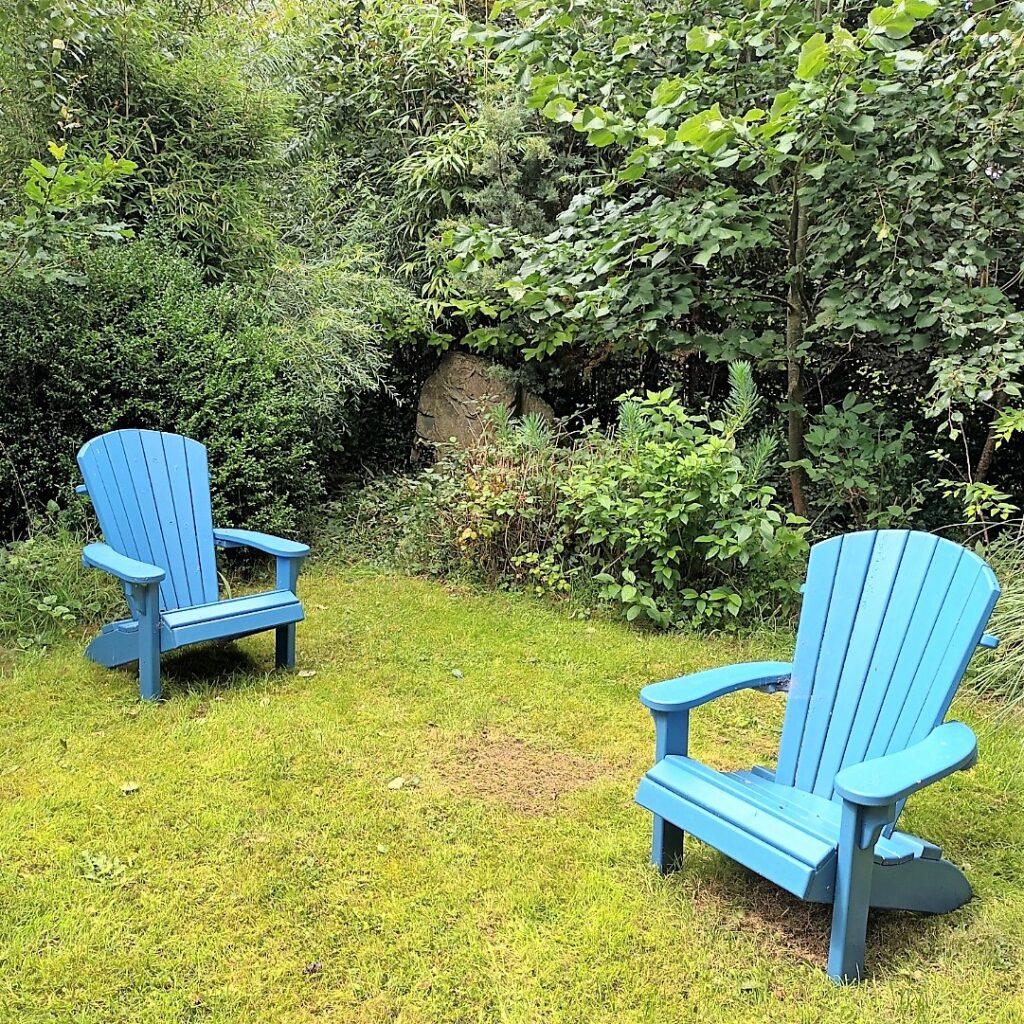
Easier said than done and it took a few hours with a crow bar and spade to remove both shrubs , the euphorbia was past it’s best but the pampas was in great condition so I cut it into six pieces which I potted up , not the right season of course but pampas is a tough old bird to kill and there is every chance these will all take and if they do they will go into the area under rewilding next Spring .

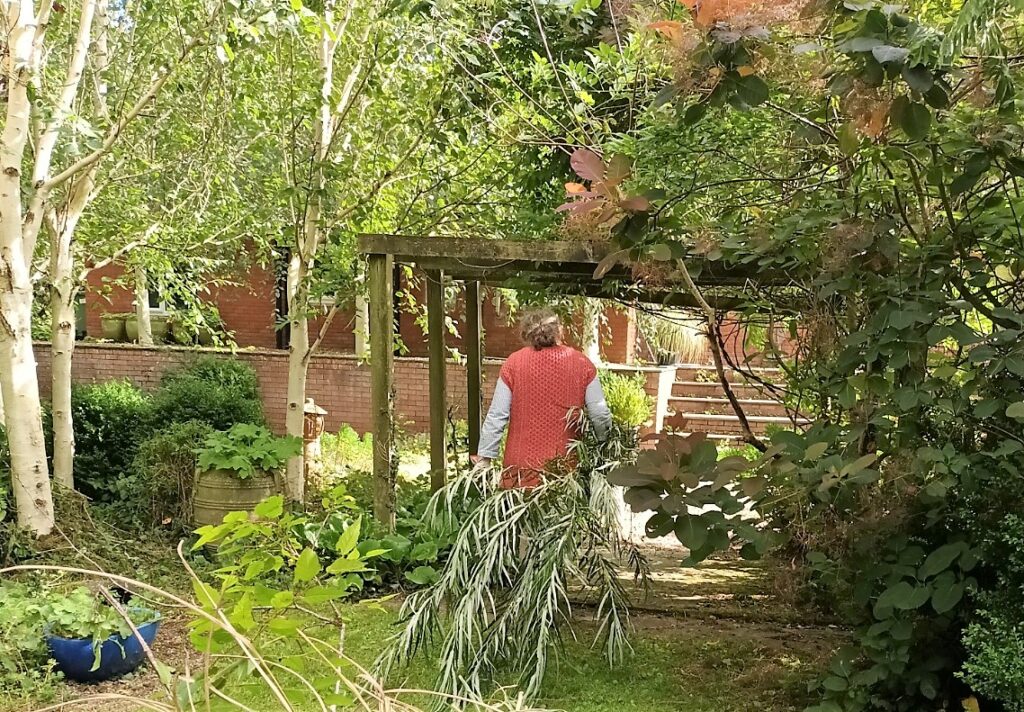
We took a huge amount of ivy and brambles out and exposed the bare earth and the plan is to plant this up with Spring bulbs and some ground cover such as erigeron and geraniums which will add to the vinca colony already there and thriving away for years in the background .
The area slowly took shape and I moved the Adirondack chairs into the shade of the Silver birch and the lime tree and the final touch called out for a tall pot which was answered by moving a large blue Greek style pot from it’s position on the passage way to the back garden where I had never really been totally happy with but it looked at home as soon as it went into the new position .

I often do this with pots that we fall in love with but haven’t an immediate position for and park them up for a period that can extend to years but eventually their time comes and so it was with the big blue pot bought in Clonmel Garden Centre two years ago .

I knew this area had become overgrown , I wasen’t happy with it for the past few years , a nasty little job which as I said I have been avoiding on the basis it’s grand so I was delighted that she took it over and took it in hand … mind you the frequent references now that it is finished to “ zen gardening ” , zen this and zen that is beginning to grate !
Polako is a great phrase from Bosnia / Croatia/ Serbia meaning to calm down / relax / take it easy and there is something about the pronunciation and it’s dead pan delivery by Balkan people that does actually have a calming effect and polako is something all gardeners should adopt especially when it comes to laying out a garden as we all want the instant effect and forget to look ten or even five years down the road when the garden growth has filled out and taken over .
Nature is relentless in the garden and will slowly reclaim any cleared ground or bare earth and you need to be constantly alert if you want to retain control . Unfortunately nature doesen’t always use plants that are desirable and you never hear of an area being reclaimed by say purple maples or beautiful roses rather it is thistles , nettles and docks that you have to battle but sometimes you do get nice plants colonising a patch such as this clump of wild strawberries that all grew from one commercial strawberry plant that escaped and set seed in our gravel garden … I have transplanted several of these wild strawberries to the forest area where they are in seventh heaven , romping away … lovely evergreen foliage , low growing with delicate white flowers in Spring followed by tasty small berries , what’s not to like !
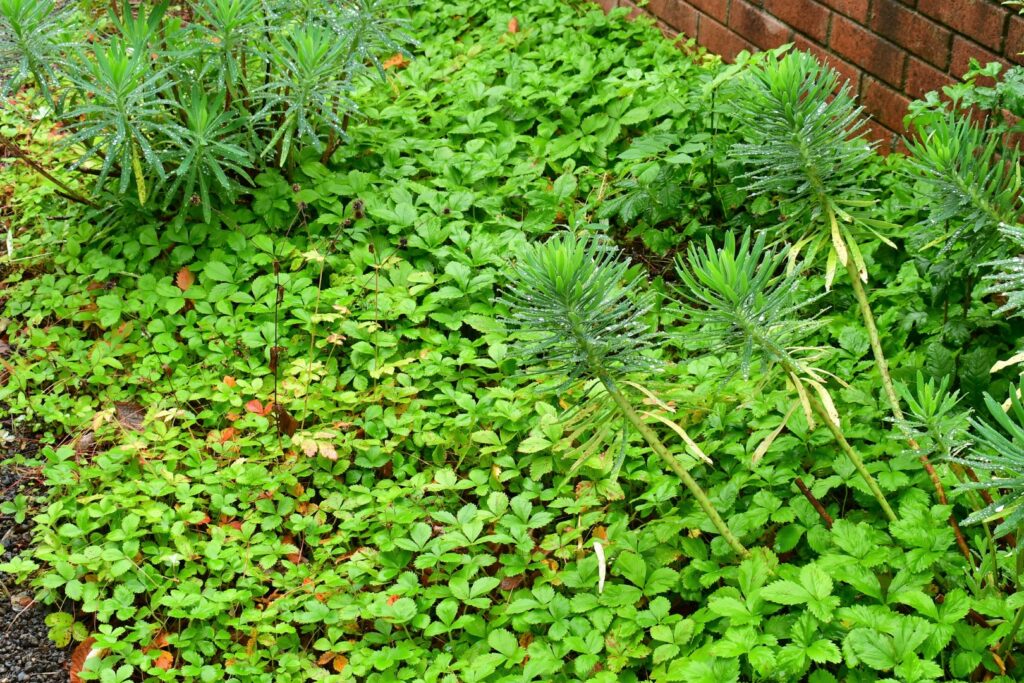
In August the wild flowers are in full bloom , all self seeded over the years none more so than the purple loosestrife , lythrum salicaria , which loves and follows damp areas such as boggy or wetlands so our garden here is perfect for it . A single plant of loosestrife can carry two and a half million seeds so be careful what you wish for with the purple loosestrife although we love it and it is not a problem or invasive overly much here .
Loosestrife was used in medieval times as a treatment for dysentery but also for tension hence the common name lose strife and by chance this week I met Liam Burke out shopping in Clonmel and as we usually do chatted about herbs and wild flowers . Liam is a botanist and garden enthusiast who at 84 years of age is still young at heart with a hive of stories about the origins of plant names and he had a story about loosestrife that I hadn’t heard before … in rural Ireland where a small farmer might have a cow and a horse and a few acres to plough so naturally he would like to yoke up both animals but of course horses and cows have different gaits and walking speeds and wouldn’t pull well together however someone realised that if you tied a bunch of loosestrife between them on the harness that it had a calming effect and they worked together in harmony !

The ultimate self seeders are alchemis mollis known as ladies mantle and erigeron better known as fleabane and in the right conditions which is gravel they will fill every place , we love them in our garden which is lucky for us as both plants do and have taken over every bit of free space in the back gravel area… we have to keep the back door closed or they would come in the house !

Be careful what you wish for with Erigeron , it takes over concrete and gravel areas !

Seven years ago we started a design and planting in a new garden in Croatia and while yes the heat and summer season conditions ate up a lot of the new plants , the cover by the shrubs has been phenomenal … trial and error though on the planting and I over watered in the first few years and lost of all things the two quintessential Mediterranean shrubs , lavender and rosemary . Colour is provided against the green evergreen with tradescantia pallida in clumps throughout and a certain amount of self sown perrenials such as Saint Ante however with these although perennial they rarely come back in the same place and I am happy with this informality not to mention the small humming bird type moth that feeds off it every evening … for years I tried to transplant the Saint Ante to the garden but they never took and then a year or so ago it appeared blown in from the road side where it grows wild and now I have it everywhere .


Gardening and design is different in Croatia from that in Ireland because of the weather and no not as you might think because of the rain in Ireland but because of the awful non stop heat of the Croatian Summer which limits what you can plant .
I always feel that the most important thing in gardening is that you have a style or theme that you like and while I inherited a lot of things from my parents , garden design was not one of them … my Mother , a practical woman, just grew rhubarb and grew it well while my Father never progressed beyond the stage of planting annual flowers in May in a rigid straight line of blue lobelia / white alyssum and his comment on seeing my first garden was a puzzled “ it’s a bit wild isen’t it ” ! .
Early on with my first garden in Rosslare I fell in love with the natural look where plants and shrubs thronged together and overlapped each other , rarely if ever cutting back and with little emphasis on flowering trees or shrubs but relying on leaf and bark colour for contrast and to this day that natural look is my mantra .
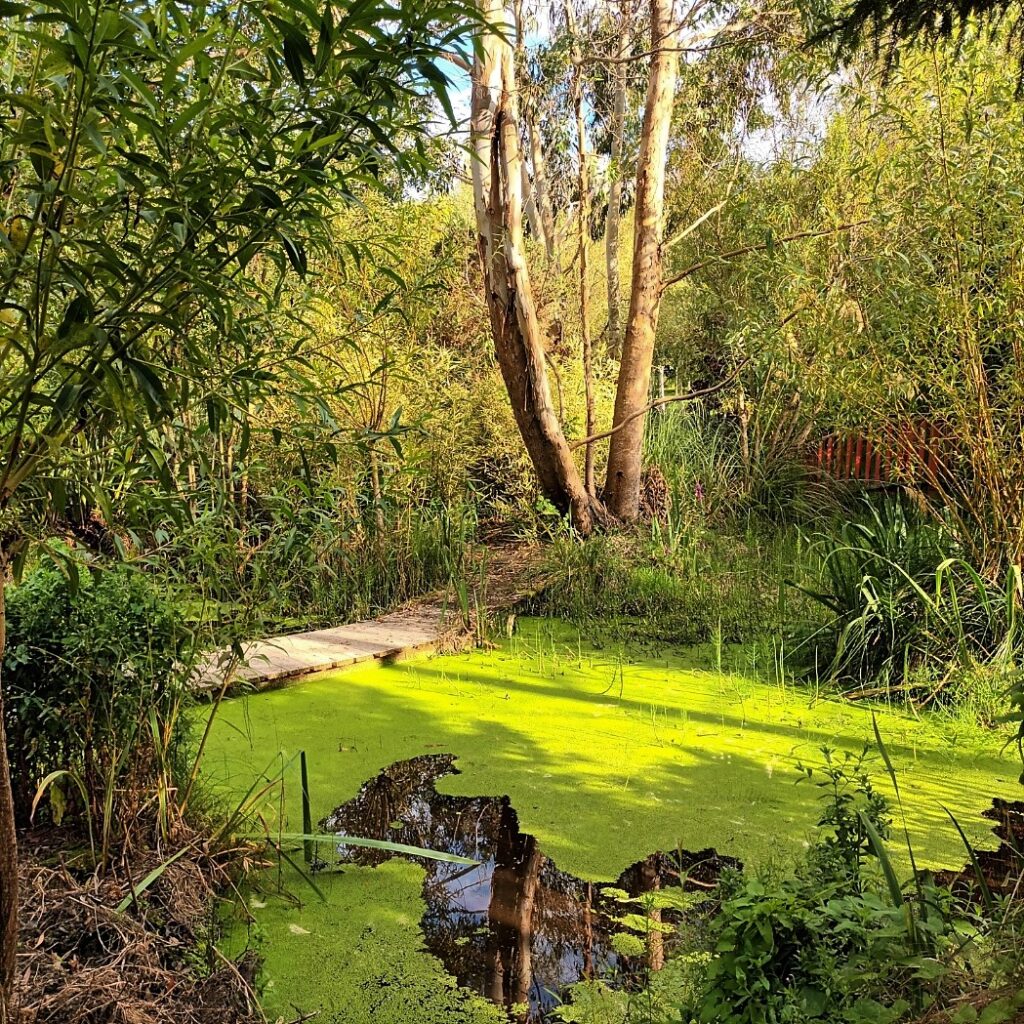
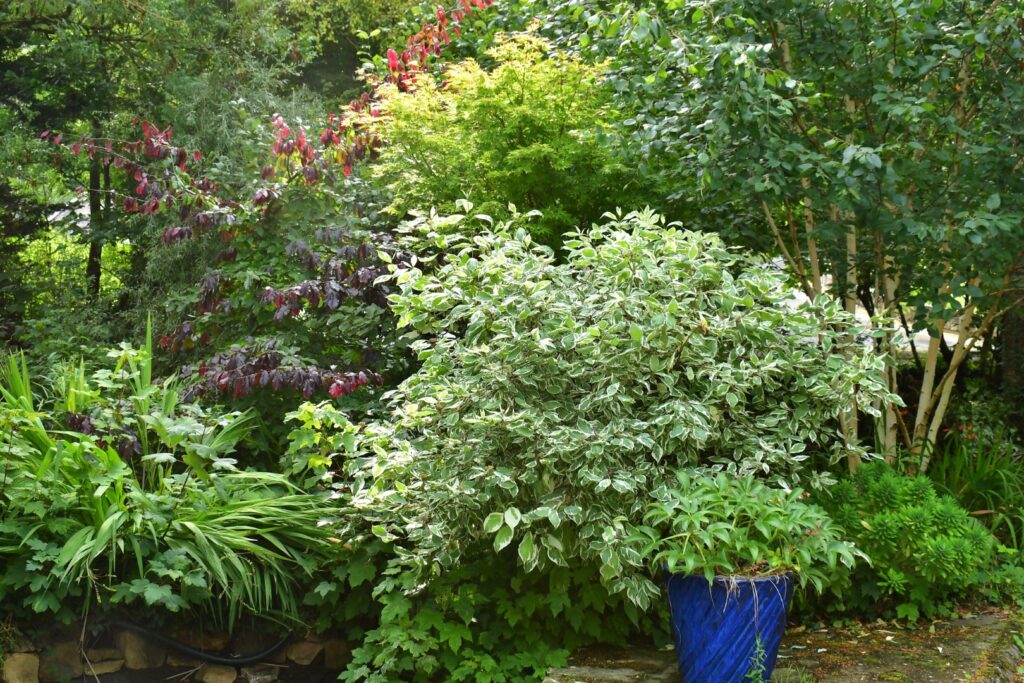
When I started gardening in the 1970’s I was heavily influenced by two great garden writers , Christopher Lyod and Robin Lane Fox , whose style I loved and to this day I read and re read Llyod’s The Well Tempered Gardener from 1970 and Lane Foxe’s Better Gardening from 1982 … both books are still available and have never gone out of print .
I know that these days people get everything be it gardening or cooking on the internet which can be accessed in an instant on today’s androids or I phones and I do it myself and love it however I would recommend that any serious gardener should have books by four authors on their book shelves ,Christopher Llyod , Robin Lane Fox , Beth Chatto and Helen Dillon and not only are these authors exceptional gardeners themselves but they are excellent writers also .
I could add Monty Don and Dan Gleeson to that list but won’t as Monty really is a book a year man on a mass produced scale which I find are very samey and soulless while Dan Gleeson , whose work I really love , is a bit away with the fairies lyrically most of the time in his writing and his books are a bit more literature really than pure gardening .
Where style is concerned I do like gardens by traditional gardeners , neat rows of bedding , not a hair out of place and long perennial borders and I admire the hard work that goes into maintaining that order and neatness but it is not for me.
Pruning and when to do it
Pruning in Summer is often a tricky one for new gardeners , should it be done or will it damage the shrubs and my usual reply is that whenever you are in the mood it is fine to prune . Normally in Summer pruning is mainly for cutting back flowering stems or thinning out perennials that have gone over but Summer is also a great time to take cuttings and these are called soft wood cuttings as you take them from new growth and this week I took about twenty such cuttings from a favourite hydrangea in the Lower Wood .
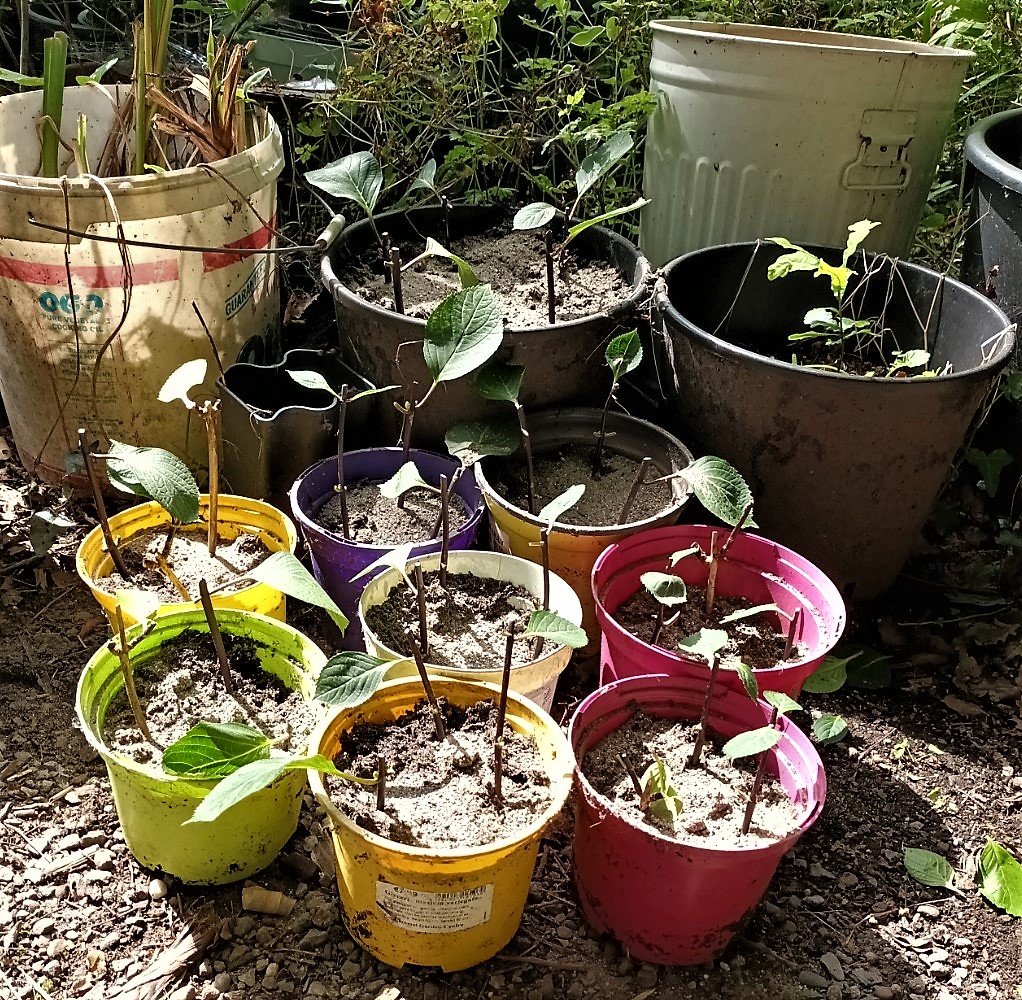
There is another reason you might prune and this is mainly why I took the hydrangea ones where sometimes the exhuberant summer growth can get just that too much exhuberant and obscure the view or interfere with the growth of a neighbouring shrub or tree … the hydrangea was covering up a lovely cast iron installation so I let it flower and then cut it back and in the same spirit I removed branches from a variegated dogwood and a silver birch that were overcrowding ( plants do bully !) a delicate pink maple .

Is August a good time to prune oak … I had been looking at this oak mature in the lower garden for the last ten years and each year it put growth on very slowly but these past two years it has shot up which led me then to ask myself should I “ raise the skirt ” as the gardening term goes for exposing the bark of a tree to about a five feet central stem … I ask myself the same question each year about this oak and part of me says leave well enough alone it’s grand as it is and you might ruin it ?
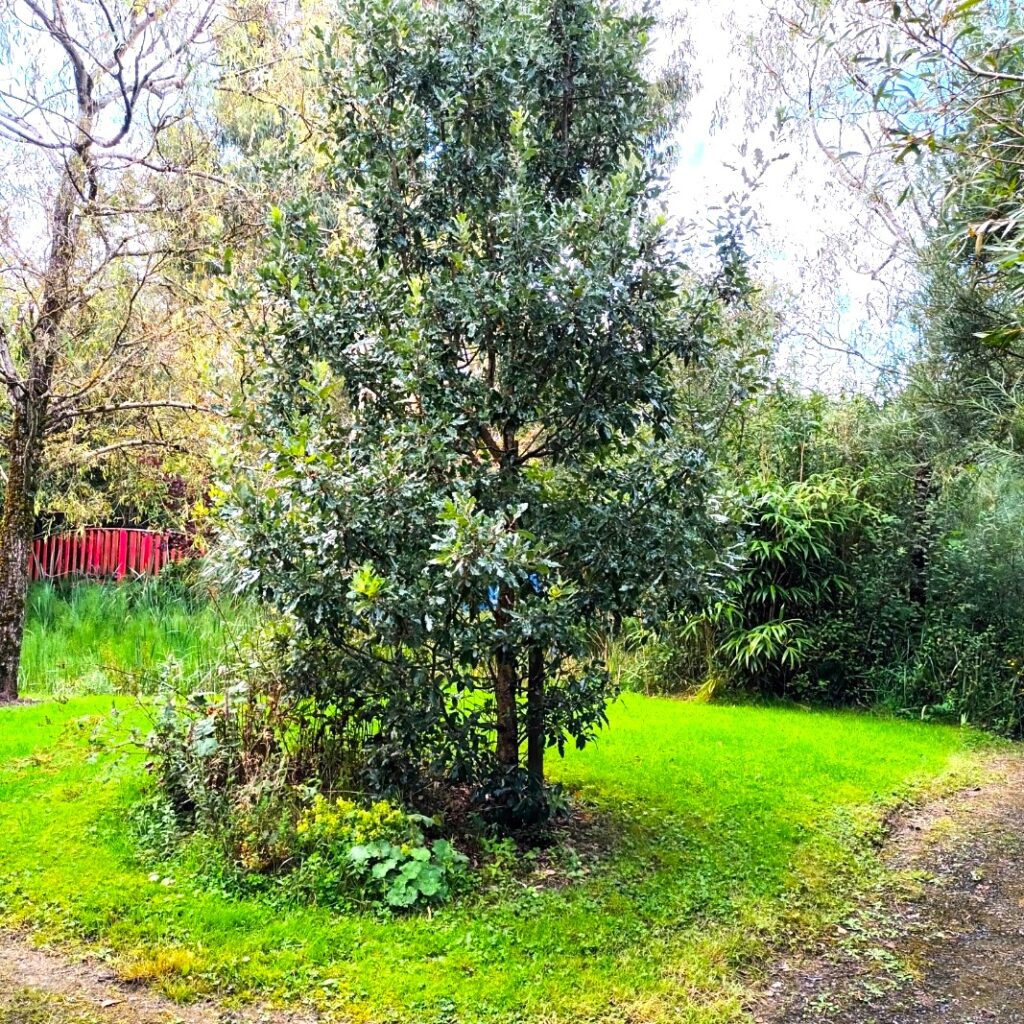
This week I went for it and decided the oak would stand out more if I cut away the lower branches and I think it looks great … how do you decide when enough is enough ? … by standing back and looking at the emerging shape as you go along rather than hacking away aimlessly … which is normally the case with Snezana , the secateurs terminator , who when challenged standing over the remains of her latest “pruning” has a stock answer of “ I didn’t do it with purpose ” !
Pruning the oak

Final shape of the oak

One of these Lads is a great way to prune !
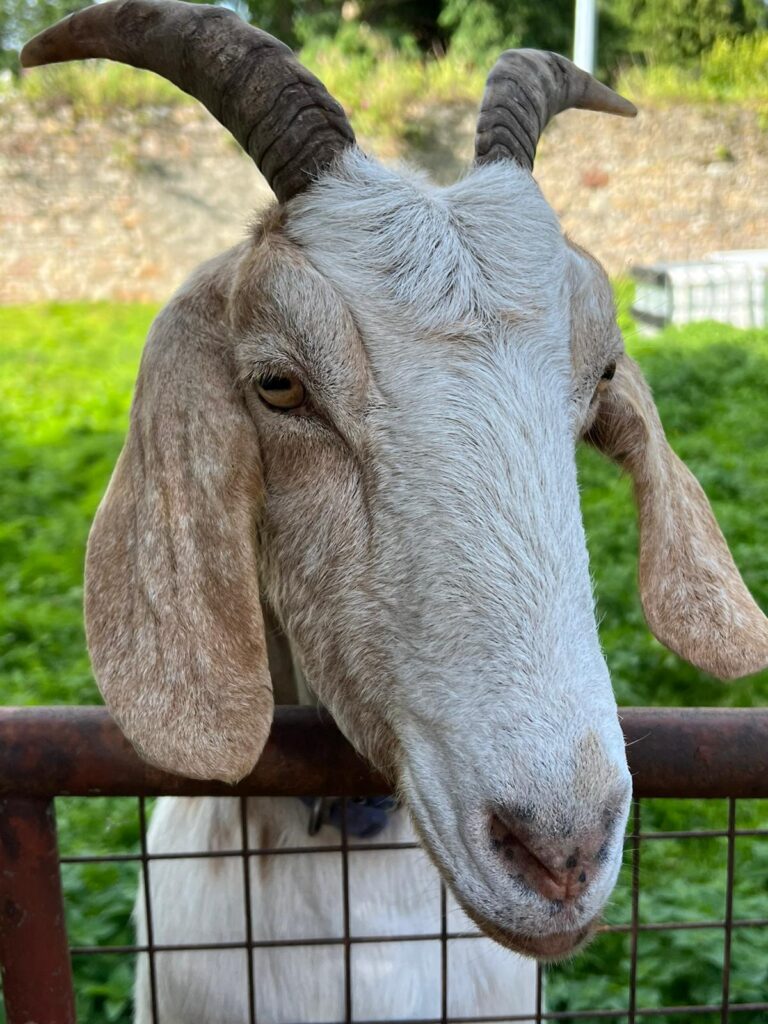

Garden Pots
We have a lot of pots throughout the garden and I am often asked how I go about the selection of plants for each pot and basically the answer is that it depends on how far the pot is from the house as this will influence how much watering it gets or whether the pot will have to take it’s chances with rain water … even this can be haphazard as although we get regular rain in Ireland there are now periods of drought with climate change so mostly I locate pots so that they will be in shade for part of the day .
With a new pot I start with a strong evergreen lead plant or small shrub and build around it with bedding annuals such as this latest pot in the Lower Field which has an evergreen grass coupled with blue lobelia and trailing nasturtium … it is beside the water garden so if the pot looks a bit parched I can easily upend a bucket of water in it .

Nasturtium is a favourite of mine for pots and I love it’s trailing habit , it will grow strongly from planting in May until the first frosts hit it , it dies back messily but is easy to collect and leave in the compost bin in early November . TV chefs and cook books say you can eat the leaves and the flowers which look very pretty on the plate although I have never tried it being a strictly lettuce and rocket man myself !
Nasturtium is easy to grow from seed and sometimes it will self seed from last year’s crop but I always buy as a bedding annual in late April from Clonmel Garden Centre in pots of 20 seedlings … two types generally on sale , one called whirly birds which is a compact and well behaved hybrid whereas I prefer the traditional trailing type which crawls over everything in it’s path .
With pots close to the house again I start with part shade and this pots at the back door has low growing carex , a variegated grass that does really well as either a front of border perennial and it looks equally well in a pot and I have filled in with a mixture of strawberry plants and lamium Chablis … the strawberry have good structure and strong leaves while the lamium or dead nettle provides nice variegation … this is a planting mixture I am very fond of and it keeps it’s leaves throughout the winter .

I have four very large pots close to the house that I keep purely for hostas and which of course need quite a bit of looking after what with regular watering and snail patrols and these are the pots that give me most enjoyment as I just love the huge hostas and how they thrive in the part shade along the walk past the house down to the lower garden .

My go to plant for most of the pots away from the house are ground cover geraniums that almost thrive on neglect , they mound up nicely , are easy to take cuttings from and are evergreen with the bonus of summer flowers .

So overall I rely on a small group of trusted plants for the pots with the water and attention hungry ones sited around the house where I can look after them .
Robbie Robertson RIP
They are dropping like flies these days , the music icons of the past decades and following Sinead O’Connor last month was Robbie Robertson , lead guitarist of the Band and one of the greatest song writers of his generation . The great film director , Martin Scorsese , always went to Robbie Robertson to write the music sound track for all his movies .
Robertson was part American Indian through his mother who was brought up on the Mohawk reservation and some of his greatest work was when he recorded music inspired by the american indians of the plains such as Ghost dancer and Broken arrow .
For many including myself the best music film is Martin Scorsese’s the Last Waltz which in 1978 featured the farewell concert of the Band and I defy anyone not to be blown away by the sheer beauty of the Last Waltz theme music written by Robbie Robertson . RIP .


Leave a Reply